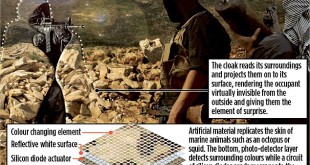The team led by Junhao Lin, a Vanderbilt University Ph.D. student and visiting scientist at Oak Ridge National Laboratory (ORNL), have developed ultra thin and flexible metallic wire that is just three atoms wide.
Lin reportedly made the tiny wires from a special family of semiconducting materials that naturally form monolayers. These materials, called transition-metal dichalcogenides (TMDCs), are made by combining the metals, molybdenum or tungsten with either sulfur or selenium. Junhao used a scanning transmission electron microscope (STEM) that is capable of focusing a beam of electrons down to a width of half an angstrom (about half the size of an atom) and aims this beam with exquisite precision,” said mentor and ORNL Wigner Fellow Wu Zhou.
The breakthrough could result in much thinner electronics, smaller processors and devices like tablets and television displays that are as thin as a sheet of paper that you can roll up and stuff in your pocket or purse.
 International Defense Security & Technology Your trusted Source for News, Research and Analysis
International Defense Security & Technology Your trusted Source for News, Research and Analysis

